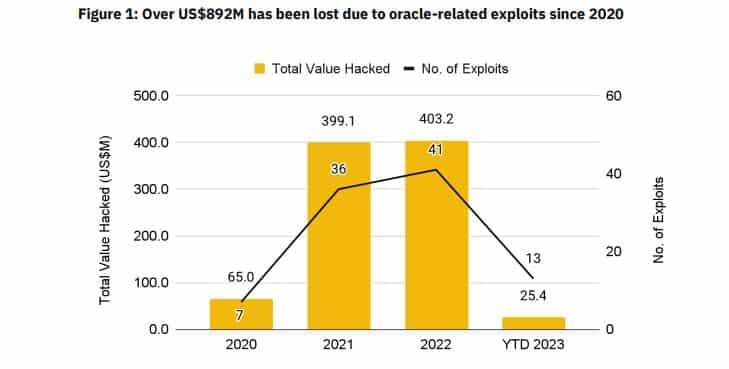News
As oracle networks cause rising concerns, what’s next?
Concerns over manipulation by malicious players have sparked discussions around a potential shift from oracles to oracle-less protocols.

- Oracle-related manipulations resulted in exploits of $892 million from 2020.
- Oracle-less protocols aim to address the gaps, but they are not foolproof.
Blockchain oracles have played a key role in connecting the blockchain world with the real world, enabling decentralized apps (dApps) to react to data from traditional systems.
The most basic example of these services is the price information of different crypto assets, which are fed into the smart contracts of decentralized finance (DeFi) protocols.
Chainlink [LINK] was the popular oracle network at the time of writing, with its LINK token being the 19th-largest crypto by market cap, per CoinMarketCap
.However, concerns over reliability and manipulation have cast a serious doubt on the future of this blockchain middleware. According to a recent report by Binance Research, nearly $892 million worth of cryptos have been lost due to oracle-related manipulations over the last three years.
The incidents of exploits have dramatically come down in 2023. Regardless, talks of an alternative to the existing oracle system have gained traction. That’s where oracle-less protocols come into the picture.
Go oracle-less
Oracle-less protocols eliminate the need for oracles entirely. This means that the projects won’t be dependent on external price feeds. Hence, malicious actors won’t be able to exploit them easily.
As per the research report, some ways by which oracle-less projects could be implemented in the realm of lending was through peer-to-pool and peer-to-peer models.
The peer-to-pool model involves the creation of a permissionless pool, wherein lenders and borrowers would decide on the asset price. Pool creators can independently set the initial interest rates for each specific token pair. Rates then fluctuate based on the utilization.
Ajna Finance was the prime example of a protocol employing this mechanism.
On the other hand, the peer-to-peer model would provide a platform where both parties could directly interact and agree on the price. PWN Finance uses this mechanism to match the lenders and the borrowers.
Not everything was hunky-dory
While oracle-less protocols do eliminate the dangers and risks attached with oracles, they come up with certain trade-offs that should be factored in.
Oracle-less solutions are more complex in nature, which may require users to take on mundane responsibilities, such as tracking asset prices and dedicating more time for analyses.
Moreover, even if implemented, there would always be an element of doubt in the minds of users. Hence, they might end up cross-checking the data with external sources, which ironically, could come from an oracle.


